7 Ultra-Rare Precious Stones We Saw at the Tuscon Gem Shows

Don’t let its dusty, artsy, downhome vibe fool you — Tucson in February plays host to the jewelry industry’s heaviest hitters. They come to this Arizona desert town to attend a confluence of gemstone buying fairs — some 30 distinct shows dot the Tucson cityscape this month — where they hunt for the world’s rarest and most expensive colored stones.
Just ask Jared Silver, president of Stephen Silver, a high-end jeweler located at the Rosewood Sand Hill in Menlo Park, Calif., the heart of Silicon Valley. He arrived in Tucson last week to search for eccentric, one-of-a-kind gemstones and discovered that the buying scene was more competitive than ever.
More from Robb Report
A Former Cartier Exec Is Reviving One of France's Most Historic Jewelers
Everything You Need to Know About Collecting Vintage Jewelry in 2022
From Chopard to Graff: 10 Jewels That'll Suit Every Personality on Valentine's Day
“A lot of dealers are feeling very good because they’ve had such a strong year, and they’re asking big prices,” Silver told Robb Report. “I made 20 to 25 fair offers on stones and was declined 95 percent of the time.”
But the trip wasn’t a total bust. Silver managed to snag a 5.07-carat heart-shaped ruby that earned a coveted “classic Mozambique” rating from New York-based American Gemological Laboratories, the country’s premier colored stone grading lab.
“I’ve never seen a stone this brilliant before,” Silver said, as he cradled the 5-carater between his fingers and showed off its Platonic red glow.
For all its beauty, however, the ruby was far from the show’s most superlative stone. Robb Report surveyed dealers at two of the city’s most respected fairs — the AGTA GemFair at the Tucson Convention Center and the GJX show, a.k.a. “the Tent,” located across the street from the convention center — and assembled a list of the rarest and most expensive gems to be found, some as loose stones and others set into jewels. Below, we offer a highly debatable list of Tucson’s finest stones, in ascending order of suggested retail value.
2.21 carat Grandidierite
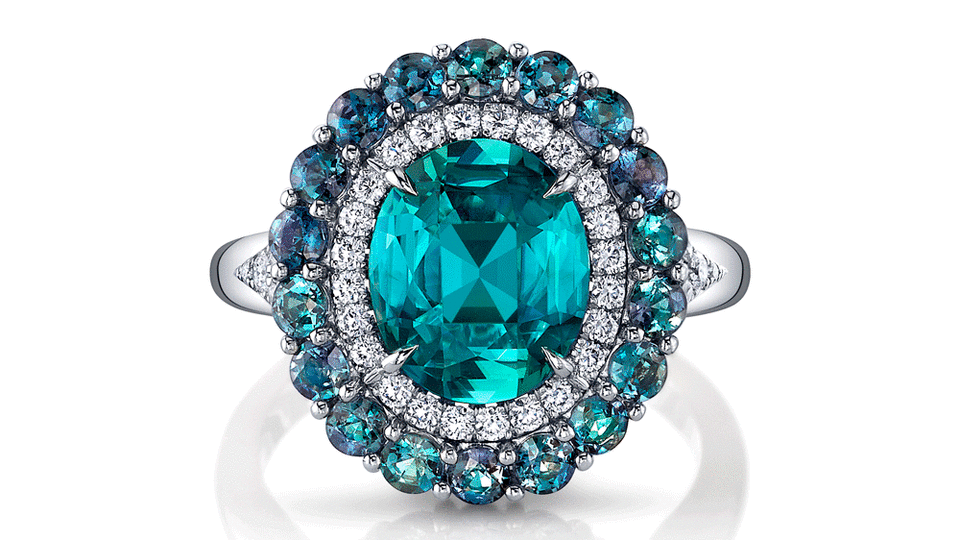
Blanca Espinoza
A blue-green gem mined in only one place on earth — southern Madagascar — and named after the French explorer Alfred Grandidier, grandidierite is among the world’s rarest gem varieties. Southern California-based Omi Privé set a 2.21-carat oval specimen in a platinum ring framed by nearly a carat of Brazilian alexandrites, and could legitimately call the resulting jewel one of Tucson’s rarest finds. If you’re looking for something no one else has — nor has ever heard of — this one’s for you. $90,000, Omi Privé
6.48 carat Kashmir Sapphire

100% Natural Ltd.
In the gem trade, Kashmir, the Himalayan territory disputed between India and Pakistan, carries the imprimatur of top quality. Blue sapphires from this region command as much as $200,000 per carat at retail, while lookalike stones from locales like Sri Lanka or Madagascar may only fetch a tenth of that price. Valued for their velvety cornflower blue hue, Kashmir sapphires, including this 6.48-carat specimen from New York City-based 100% Natural Ltd., are almost always sourced from estate pieces, given that the original mine stopped producing about a century ago. $1.2 million, 100% Natural Ltd.
11.09-carat Padparadscha Sapphire
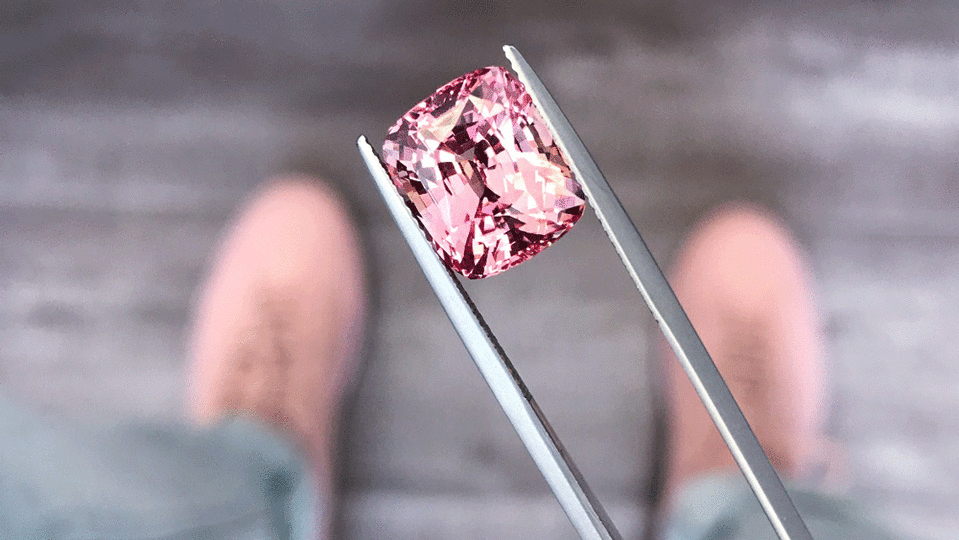
Dave Bindra
At their best, padparadscha sapphires represent the perfect marriage between pink and orange — which explains why they are often compared to tropical sunsets. But it’s rare to find “a perfect padparadscha,” which is how Dave Bindra, vice president of B&B Fine Gems in Los Angeles, described this 11-carater. Not only is it from Sri Lanka, the classic location for “pads” (padparadscha is Sinhalese for “lotus blossom”), the stone also boasts exceptional size, cut and clarity. $1.4 million, B&B Fine Gems
23 carats of Sandawana Emeralds
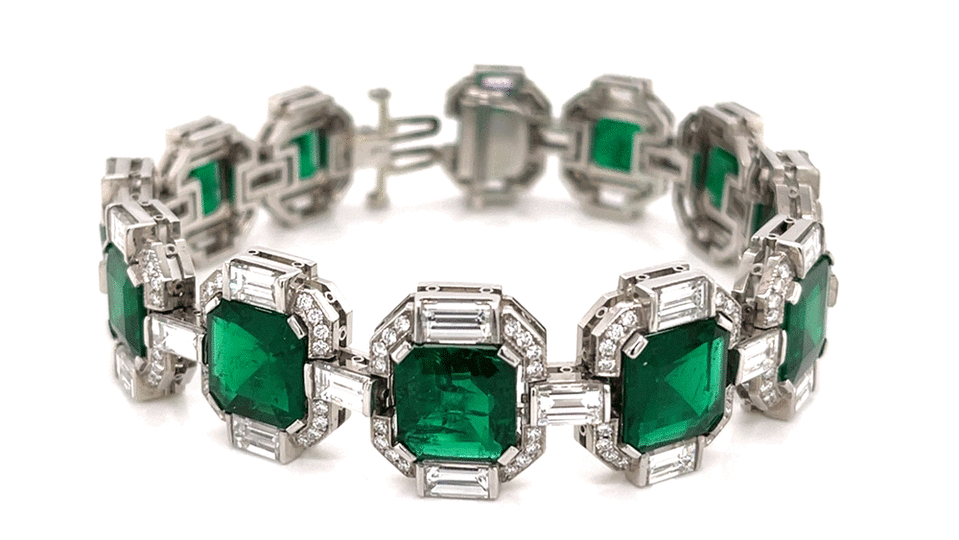
100% Natural Ltd.
Forget Colombia. Some of the most desirable emeralds on earth come from southern Zimbabwe’s Sandawana mines. Known for their high refractive indices and high chromium content, the gems are top contenders for the title of world’s rarest emeralds, simply for the fact that the mines are largely tapped out. The 23 carats of Sandawana emeralds in this Art Deco-style platinum bracelet from 100% Natural Ltd. are exceptional for their size — the individual stones are among the largest sizes that location has ever produced. And let’s not forget the 13 carats of diamonds that surround them. $1.5 million, 100% Natural Ltd.
10.62-carat Brazilian Alexandrite

Blanca Espinoza
The elongated oval Brazilian alexandrite at the center of this platinum and diamond ring is notable not only for its size (most alexandrites weigh less than a carat), but also for its phenomenal color change, which goes from green in sunlight to red in lamplight: According to a lab report, the degree of color change in this 10-plus carater is on the order of 90-100%. That its hails from the original Hematita mine in Brazil, the origin of choice for most experts, is another reason why the stone is valued so highly. $2 million, Omi Privé
49.75 carats of Imperial Jade
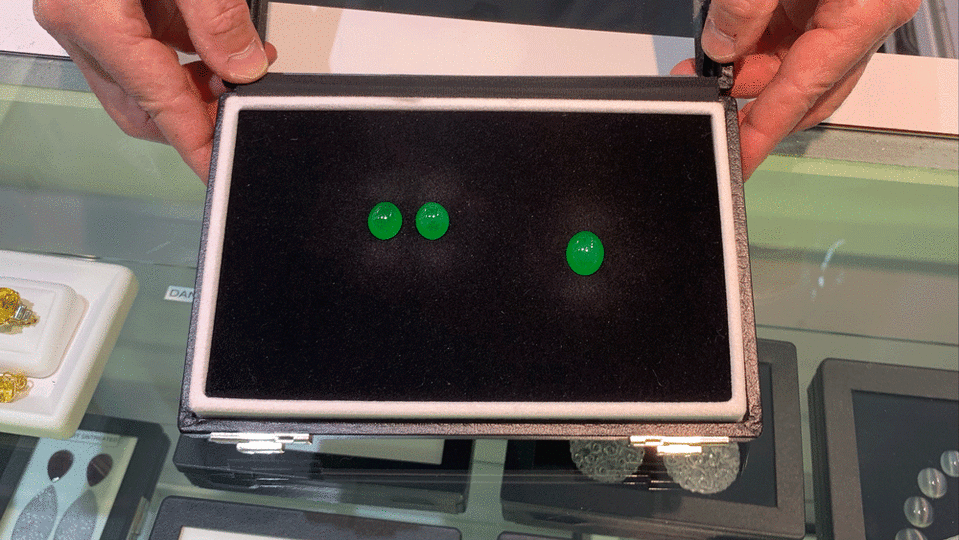
Pillar & Stone International
Offered in a suite of three translucent Burmese stones (a pair for earrings and a matching ring), the imperial jade that Pillar & Stone showcased at its booth at the GJX show stood out for an obvious reason: “It’s very rare that you have the glow from the inside,” said gem dealer Roland Schluessel, cofounder of Pillar & Stone. “One jade in a million has that. This color in a bangle would be $12 million.” $2.35 million, Pillar & Stone International
80.26-ct. Burma Sapphire

Ijadi Gem
The enormous unheated blue sapphire that New York-based Ijadi Gem displayed at its booth at the AGTA GemFair was almost certainly the most valuable gem in all of Tucson. “We’ve been hiding it in the safe and it’s the first time we’re exposing it,” Sam Ijadi told Robb Report. “The market is very strong for finer stones; we’ve never had this many brands, especially European jewelry brands, attending the show.” The gem earned a “royal blue” description from SSEF and Gübelin, two top-rated gem grading labs based in Switzerland, further cementing its status as Tucson’s gem to beat. Said Ijadi: “It’s the finest stone I’ve seen in my whole career.” $10 million+, Ijadi Gem
Honorable Mention: 7.08-carat Rhodolite Garnet

Moyo Gems
At around $3,000, this 7.08-carat rhodolite garnet from the Tanga region of Tanzania, offered by Moyo Gems, has nowhere near the value of the other stones mentioned in this story, but it’s extraordinarily rare in another sense: The gem is traceable all the way back to the Tanzanian miner who dug it out of the ground, a woman named Salma Kundi Ernest. That’s not all: Buyers interested in full transparency and traceability would also be pleased to know that the stone was cut by Michigan-based Beth Stier, offering another level of background knowledge simply unavailable to buyers of most gemstones.
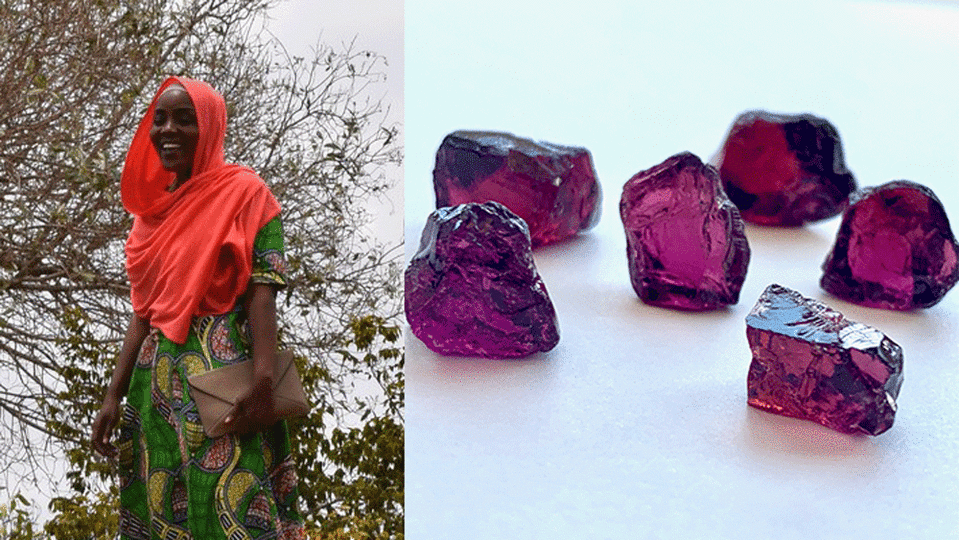
Moyo Gems
An ethical gemstone collective founded in East Africa, Moyo Gems works with artisanal gem miners in Tanzania and Kenya to bring rubies, sapphires, tourmalines, garnets, aquamarines, citrines, amethysts and other gems from the region to market, with a focus on equitable pay and safe working conditions for miners. Ernest, who mined this particular stone, is also an officer with the Tanzania Women Miners Association (TAWOMA). “This gem is remarkable not only for its beauty, but for what it represents: a radical shortening of the supply chain, and a redistribution of wealth to the people, often women, who dig the gems from the ground,” Monica Stephenson, co-founder of Moyo Gems, tells Robb Report. $3,000, Moyo Gems
Best of Robb Report
Sign up for Robb Report's Newsletter. For the latest news, follow us on Facebook, Twitter, and Instagram.

